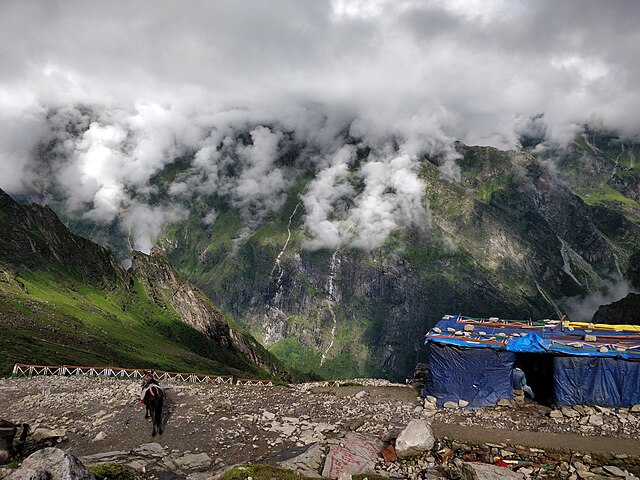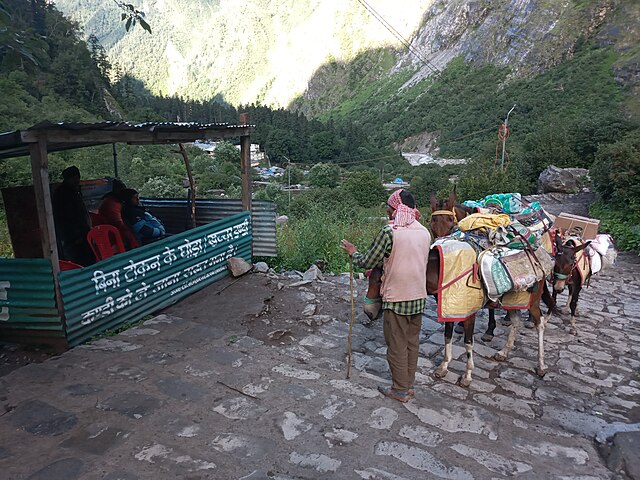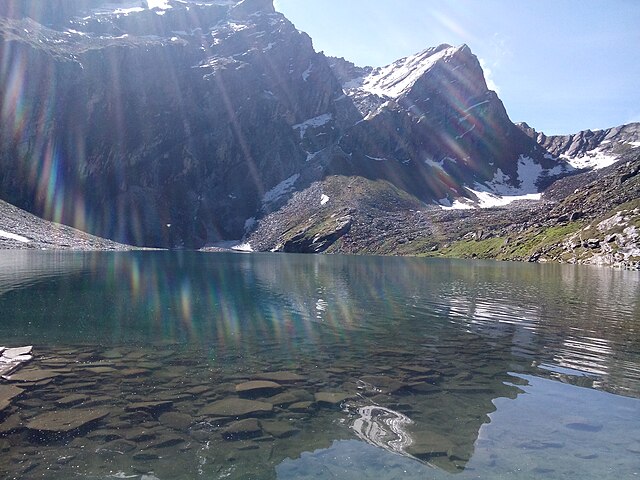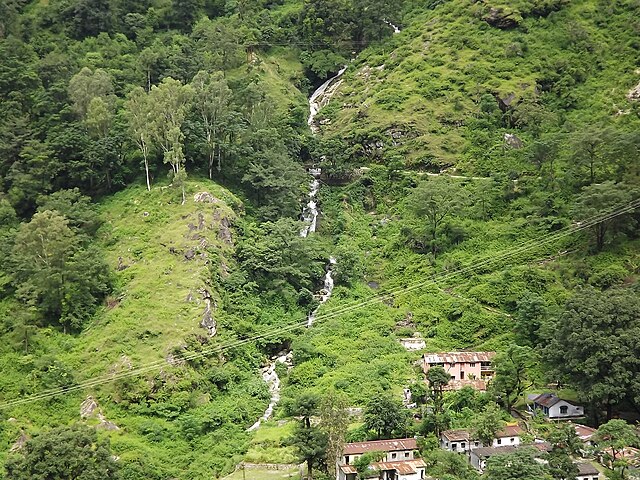Have you ever dreamed of combining spiritual enlightenment with breathtaking mountain adventure? The Hemkund Sahib trek offers exactly that – a perfect blend of religious significance and natural beauty that draws thousands of pilgrims and trekkers every year. Nestled at an altitude of 4,329 meters in the Chamoli district of Uttarakhand, this sacred Sikh shrine surrounded by seven snow-capped peaks creates an experience you’ll never forget.
Whether you’re a spiritual seeker, adventure enthusiast, or nature lover, this comprehensive guide will help you plan the perfect journey to one of India’s most revered high-altitude destinations. Let’s embark on this incredible adventure together!
What Makes Hemkund Sahib So Special?

Imagine standing beside a crystal-clear glacial lake, surrounded by towering peaks that seem to touch the heavens themselves. That’s the magic of Hemkund Sahib – a place where earth meets sky in the most spectacular way possible.
The Sacred History Behind Hemkund Sahib
The significance of Hemkund Sahib runs deep in Sikh tradition. According to the Dasam Granth, Guru Gobind Singh, the tenth Sikh Guru, meditated at this very spot in his previous life. The name “Hemkund” literally translates to “lake of snow,” and when you see the pristine glacial waters reflecting the surrounding peaks, you’ll understand why this name fits so perfectly.
The gurudwara here was established in 1930, but it wasn’t until 1936 that Havildar Sohan Singh, following the Guru’s description in the Dasam Granth, actually located this sacred site. Can you imagine the dedication it took to find this remote location based solely on ancient texts?
Why This Trek Attracts Thousands Every Year
What draws people from across the globe to this challenging high-altitude destination? It’s not just the spiritual significance – though that’s certainly powerful. The trek offers an incredible diversity of landscapes, from lush valleys filled with wildflowers to stark, magnificent mountain vistas that take your breath away.
The famous Valley of Flowers, a UNESCO World Heritage Site, lies adjacent to the Hemkund Sahib route, making this trek a double treat for nature enthusiasts. During the blooming season, you’ll witness nature’s own masterpiece painted across the mountainsides.
Planning Your Hemkund Sahib Trek

Planning is everything when it comes to high-altitude trekking. You wouldn’t build a house without a blueprint, would you? Similarly, a well-planned trek ensures you make the most of this incredible journey while staying safe.
Best Time to Visit Hemkund Sahib
Timing your visit to Hemkund Sahib is crucial because the shrine remains closed for most of the year due to heavy snowfall. The gurudwara typically opens around May-June and closes by October, depending on weather conditions.
Peak Season (July-August): This is when you’ll find the maximum number of pilgrims and trekkers. The weather is most stable, but expect crowds and higher accommodation costs.
Shoulder Season (June and September): These months offer a perfect balance – fewer crowds, pleasant weather, and if you’re lucky in June, you might catch the Valley of Flowers in full bloom.
Monsoon Considerations: While July and August see maximum visitors, they’re also monsoon months. Be prepared for unpredictable weather and potential route closures due to landslides.
How to Reach Hemkund Sahib
Getting to Hemkund Sahib involves multiple modes of transportation, and understanding your options helps you plan better.
Getting to Govindghat: Your Starting Point
Govindghat serves as the base camp for your Hemkund Sahib adventure. This small town sits at the confluence of the Alaknanda and Lakshman Ganga rivers, making it a natural starting point for the trek.
Transportation Options from Major Cities
From Delhi (500 km):
- Take a train to Haridwar or Rishikesh
- Board a bus or hire a taxi to Govindghat via Joshimath
- Total journey time: 12-14 hours
From Dehradun (295 km):
- Direct buses available to Govindghat
- Private taxis offer more comfort but cost more
- Journey time: 8-10 hours
Pro tip: Book your transportation in advance during peak season, as seats fill up quickly!
The Complete Trek Route: Step by Step
Understanding the trek route helps you mentally prepare for what lies ahead. Think of it as your roadmap to spiritual and adventure fulfillment.
Govindghat to Ghangaria: The First Leg
This 13-kilometer trek serves as your warm-up for the main event. Starting from Govindghat at 1,828 meters, you’ll gradually ascend to Ghangaria at 3,049 meters.
The trail initially follows the Lakshman Ganga river, offering beautiful views of cascading waterfalls and lush green valleys. You’ll pass through small settlements and cross several bridges that add excitement to your journey.
Key Highlights:
- Pulna village: A charming stop with basic refreshments
- Multiple river crossings on sturdy bridges
- Gradual ascent through rhododendron and birch forests
- First glimpse of high-altitude vegetation
Trek Duration: 5-7 hours depending on your pace and rest stops.
Ghangaria to Hemkund Sahib: The Final Ascent
This 6-kilometer stretch is where the real challenge begins. The altitude gain from 3,049 meters to 4,329 meters in just 6 kilometers makes this a steep, demanding climb.
What to Expect Along the Way
As you climb higher, the landscape transforms dramatically. The lush green gives way to alpine meadows, rocky terrain, and eventually, the stark beauty of high-altitude wilderness.
Terrain Challenges:
- Steep rocky paths that require careful footing
- Potential snow patches even in summer months
- Thin air that makes breathing more difficult
- Weather that can change rapidly
Rewards Along the Way:
- Spectacular views of surrounding peaks
- Unique high-altitude flora and fauna
- The growing sense of anticipation as you near your destination
- Photo opportunities that will make your friends jealous!
Trek Duration: 3-4 hours up, 2-3 hours down.
Physical Preparation and Fitness Requirements

Let’s be honest – this isn’t a casual weekend stroll. The Hemkund Sahib trek demands good physical fitness and mental preparation. But don’t worry; with proper training, most people can complete this journey successfully.
Training Tips for Beginners
Starting your fitness journey at least 6-8 weeks before your trek gives your body time to adapt and build endurance.
Cardiovascular Fitness:
- Start with 30-minute daily walks, gradually increasing to 1-2 hours
- Include uphill walking or stair climbing in your routine
- Swimming and cycling provide excellent cross-training options
Strength Training:
- Focus on leg muscles: squats, lunges, and calf raises
- Don’t neglect your core and back muscles
- Functional exercises that mimic trekking movements work best
Altitude Preparation:
- If possible, practice hiking at moderate altitudes
- Learn breathing techniques to help with thin air
- Consider arriving in Joshimath a day early for acclimatization
Essential Gear and Packing List
Packing smart can make the difference between a memorable adventure and a miserable experience. Think of your gear as your survival toolkit for the mountains.
Clothing Essentials:
- Base layers for temperature regulation
- Insulating mid-layers (fleece or down jacket)
- Waterproof outer shell for protection
- Trekking pants and thermal underwear
- Warm hat, sun hat, and gloves
- Extra socks and underwear
Footwear:
- Sturdy, broken-in trekking boots
- Comfortable camp shoes for rest stops
- Gaiters to keep debris out of boots
Technical Gear:
- Trekking poles for stability and reduced knee impact
- Headlamp with extra batteries
- Sunglasses and sunscreen (mountain sun is intense!)
- First aid kit with altitude sickness medication
- Water bottles or hydration system
Personal Items:
- Valid ID and permits
- Cash (ATMs aren’t available on the trek!)
- Phone with offline maps downloaded
- Portable charger or power bank
Accommodation and Food Options
Wondering where you’ll rest your weary head after a day of trekking? The accommodation options might surprise you with their simplicity and charm.
Staying in Ghangaria
Ghangaria serves as your overnight halt and base for both Hemkund Sahib and Valley of Flowers treks. This small settlement offers various accommodation options to suit different budgets and preferences.
Types of Accommodation:
- Gurudwara Accommodation: Basic dormitory-style rooms with shared facilities
- Private Guesthouses: Simple rooms with basic amenities
- Tented Accommodation: Seasonal camps set up during peak months
- GMVN (Garhwal Mandal Vikas Nigam) Rest House: Government-run accommodation
Booking Tips:
- Advanced booking recommended during peak season
- Carry cash as card payments aren’t widely accepted
- Don’t expect luxury – focus on cleanliness and warmth
- Shared bathrooms are common in budget options
Dining Options During the Trek
Food is fuel for your trekking adventure, and you’ll find various options along the route.
At Ghangaria:
- Simple restaurants serving North Indian cuisine
- Maggi noodles and tea – the trekker’s favorite!
- Basic breakfast options like parathas and eggs
- Vegetarian meals are predominantly available
During the Trek:
- Carry energy bars, nuts, and dried fruits
- Pack enough water or water purification tablets
- Small tea stalls may be available depending on season
- Don’t rely solely on finding food along the trail
Safety Tips and Precautions
Mountain environments can be unforgiving, but with proper precautions, you can minimize risks and maximize enjoyment. Think of safety as your invisible companion throughout the journey.
Weather Challenges and How to Handle Them
Mountain weather is like a moody teenager – it can change without warning! Being prepared for various conditions keeps you safe and comfortable.
Common Weather Challenges:
- Sudden temperature drops, especially at night
- Unexpected rainfall or snowfall
- High UV exposure due to altitude and snow reflection
- Strong winds near the lake
Preparation Strategies:
- Check weather forecasts but prepare for changes
- Layer your clothing for easy adjustment
- Carry waterproof gear regardless of predictions
- Start early to avoid afternoon thunderstorms
Altitude Sickness Prevention
Altitude sickness can turn your dream trek into a nightmare, but understanding and preventing it keeps you healthy and happy.
Recognition Signs:
- Headache and nausea
- Dizziness and fatigue
- Loss of appetite
- Difficulty sleeping
Prevention Methods:
- Ascend gradually and take rest days
- Stay well-hydrated but avoid overhydration
- Avoid alcohol and smoking
- Listen to your body and don’t ignore symptoms
- Consider carrying altitude sickness medication
When to Descend:
- Severe headache that doesn’t respond to medication
- Persistent vomiting
- Loss of coordination or confusion
- Difficulty breathing at rest
Photography Tips for the Trek

The Hemkund Sahib trek offers countless opportunities for stunning photography. From intimate moments of devotion at the gurudwara to vast landscapes that stretch beyond imagination, every step presents a new frame waiting to be captured.
Capturing the Perfect Shots
Equipment Recommendations:
- Lightweight camera or smartphone with good battery life
- Extra batteries (cold weather drains them quickly)
- Protective cases for equipment
- Polarizing filter to reduce glare from snow and water
Composition Ideas:
- Frame the gurudwara against the backdrop of surrounding peaks
- Capture the reflection of mountains in the sacred lake
- Document the journey – fellow trekkers, local culture, wildlife
- Golden hour shots during sunrise and sunset
Technical Tips:
- Shoot in RAW format for better post-processing flexibility
- Use faster shutter speeds for moving subjects (people, prayer flags)
- Bracket exposures for high contrast scenes
- Don’t forget to capture details – prayer beads, architectural elements, textures
Respecting the Sacred Environment
Photography at religious sites requires sensitivity and respect. Remember, you’re documenting not just a beautiful location, but a sacred space that holds deep meaning for many people.
Etiquette Guidelines:
- Ask permission before photographing people in prayer
- Avoid using flash inside the gurudwara
- Don’t obstruct other visitors while taking photos
- Be mindful of noise levels when using camera equipment
- Follow any specific photography restrictions posted at the site
Budget Planning for Your Trek
Planning your budget helps ensure you can fully enjoy your trek without financial stress. Like preparing your body for the physical challenges, preparing your wallet is equally important!
Cost Breakdown and Money-Saving Tips
Transportation Costs:
- Delhi to Govindghat: ₹800-2000 (depending on mode)
- Local transportation and permits: ₹200-500
Accommodation:
- Govindghat: ₹500-1500 per night
- Ghangaria: ₹800-2500 per night (varies by season and type)
Food and Beverages:
- Meals in Ghangaria: ₹150-400 per meal
- Snacks and tea during trek: ₹100-300 per day
Miscellaneous:
- Guide services (optional): ₹1500-3000
- Porter services (optional): ₹1000-2000
- Photography and souvenirs: ₹500-1500
Money-Saving Tips:
- Travel in groups to share transportation costs
- Book accommodation in advance for better rates
- Carry some food from home to reduce meal expenses
- Consider trekking without guides if you’re experienced
- Visit during shoulder season for lower costs
Total Estimated Budget: ₹5,000-15,000 per person (depending on choices and season)
Conclusion
The Hemkund Sahib trek isn’t just a journey to a high-altitude destination – it’s a transformative experience that combines physical challenge, spiritual enrichment, and natural beauty in ways that few other adventures can match. From the moment you take your first steps in Govindghat to the profound silence beside the sacred lake at 4,329 meters, every aspect of this trek contributes to an unforgettable adventure.
Whether you come seeking spiritual solace, natural beauty, physical challenge, or simply the joy of exploring one of India’s most spectacular regions, Hemkund Sahib delivers on all fronts. The combination of the sacred gurudwara, the pristine glacial lake, and the surrounding seven peaks creates a setting that feels almost otherworldly.
Remember, successful completion of this trek isn’t just about reaching the destination – it’s about embracing the entire journey. From the preparation phase through the physical challenges to the moments of quiet reflection beside the sacred lake, every step contributes to the overall experience.
So pack your bags, lace up your boots, and prepare for an adventure that will stay with you long after you’ve returned home. The mountains are calling, and Hemkund Sahib awaits your visit!
Frequently Asked Questions
1. How difficult is the Hemkund Sahib trek for beginners?
The Hemkund Sahib trek is considered moderately difficult to challenging, especially for beginners. The steep 6-kilometer ascent from Ghangaria to Hemkund Sahib gains about 1,280 meters in elevation, which can be demanding. However, with proper physical preparation, gradual acclimatization, and realistic expectations, most reasonably fit beginners can complete this trek successfully. Start training at least 6-8 weeks before your trip, focus on cardiovascular fitness and leg strength, and consider hiring a guide if you’re new to high-altitude trekking.
2. What should I do if I experience altitude sickness during the trek?
If you experience mild altitude sickness symptoms like headache, nausea, or dizziness, rest immediately and avoid ascending further until symptoms subside. Stay hydrated, avoid alcohol, and consider taking over-the-counter pain medication for headaches. If symptoms worsen or include severe headache, vomiting, loss of coordination, or difficulty breathing, descend immediately to a lower altitude and seek medical help. Don’t ignore these symptoms – altitude sickness can be serious and potentially life-threatening if not addressed promptly.
3. Can I complete the Hemkund Sahib trek in one day from Govindghat?
While technically possible for very fit and experienced trekkers, attempting the entire trek from Govindghat to Hemkund Sahib and back in one day (approximately 38 kilometers total) is extremely challenging and not recommended. Most trekkers take 2-3 days, staying overnight in Ghangaria. This approach allows for proper acclimatization, rest, and a more enjoyable experience. The one-day attempt increases risks of altitude sickness, exhaustion, and reduces your ability to fully appreciate the spiritual and natural beauty of the destination.
4. What permits are required for the Hemkund Sahib trek?
Unlike some other treks in Uttarakhand, the Hemkund Sahib trek doesn’t require special trekking permits for Indian citizens. However, you’ll need to register at the forest check posts along the route and may need to pay nominal fees for environmental conservation. Foreign nationals should check current requirements as regulations can change. Always carry valid photo identification, and be prepared to show it at various checkpoints. It’s advisable to check with local authorities or your guide service for the most current permit requirements before starting your trek.
5. Is it safe for solo travelers, especially women, to attempt this trek?
The Hemkund Sahib trek is generally considered safe due to its popularity and the presence of many other trekkers, especially during peak season. However, solo travel in remote mountain areas always carries additional risks. Women solo travelers should take extra precautions: inform someone about your detailed itinerary, consider joining a group or hiring a reputable guide, stay in populated areas like Ghangaria overnight, and avoid trekking alone on less-traveled paths. Many women complete this trek solo successfully, but preparation, awareness, and connecting with other trekkers for companionship can enhance both safety and enjoyment.

